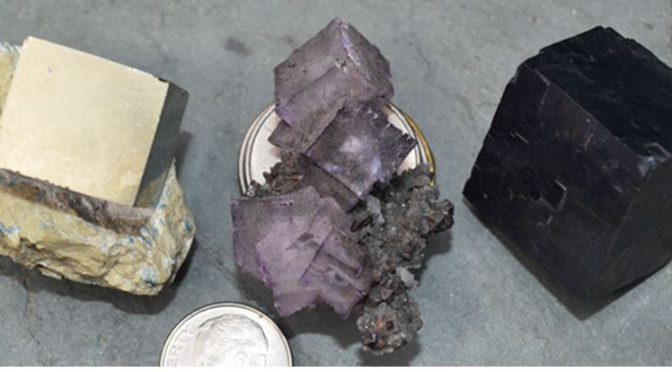Perhaps you are familiar with mineral dealer David Joyce’s song about “Crystal Systems” and the refrains about the isometric system. They go something like this:
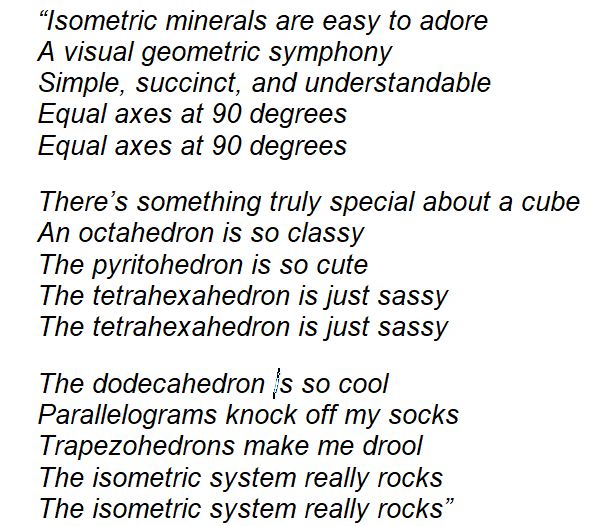
You can hear the remaining verses and lyrics here. . And read a review of his full CD in our July 2017 newsletter. You will find that David is not as complimentary about the other crystal systems.
BUT, did you know that despite the myriad of modified isometric forms that minerals like pyrite, galena or fluorite can display, there are only six basic isometric crystal forms. It is the interesting and often complex interplay and superpositioning of these forms that create the aesthetic beauty.
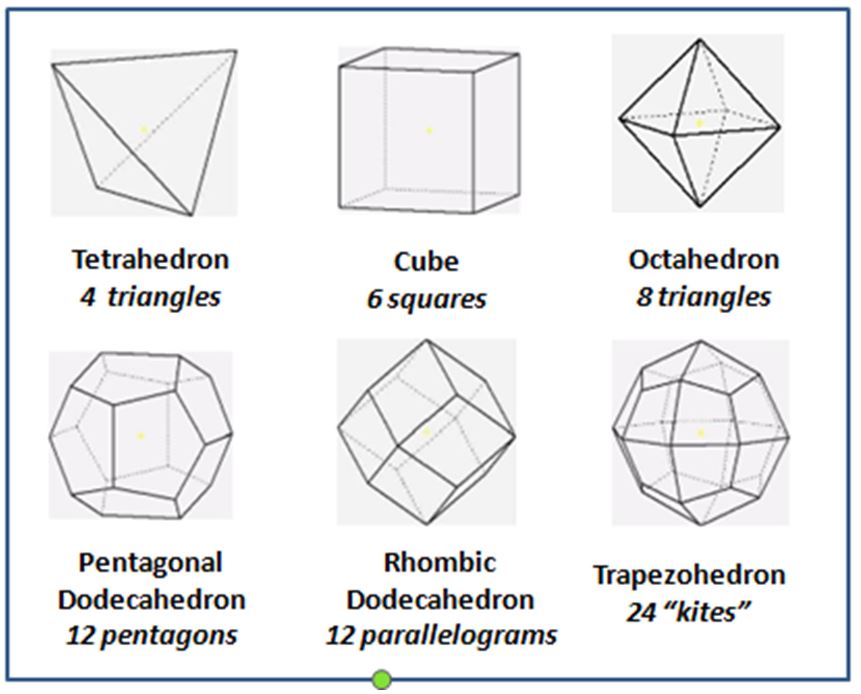
It is worth noting that in the mineral world, the pentagonal dodecahedron is also referred to as a pyritohedron given that pyrite often has this isometric form. And just in case you wondered, a kite is a geometric term: a quadrilateral whose four sides can be grouped into two pairs of equal length sides that are adjacent to each other.
There is a very succinct and visual webpage on Mindat that depicts literally hundreds of ways these six basic forms overprint each other in the mineral world (Langerwall, 2011). Can you imagine a crystal combining pyritohedral, rhombic dodecahedral and octahedral faces? I cannot, but Langerwall presents multiple versions depending on which set dominates. And for those with additional curiosity, the Crystal Shapes Gallery of Smorf Crystal Models (Holtkamp, 2014) allows you to access these shapes by mineral. The isometric shapes are linked here.
Any of us could search online for perfect examples of fluorite cubes, garnet dodecahedrons or octahedral magnetite, but I decided to see how many of these forms I could find and then photograph from my collection. It was surprisingly easy to find them, but less so to photograph them!
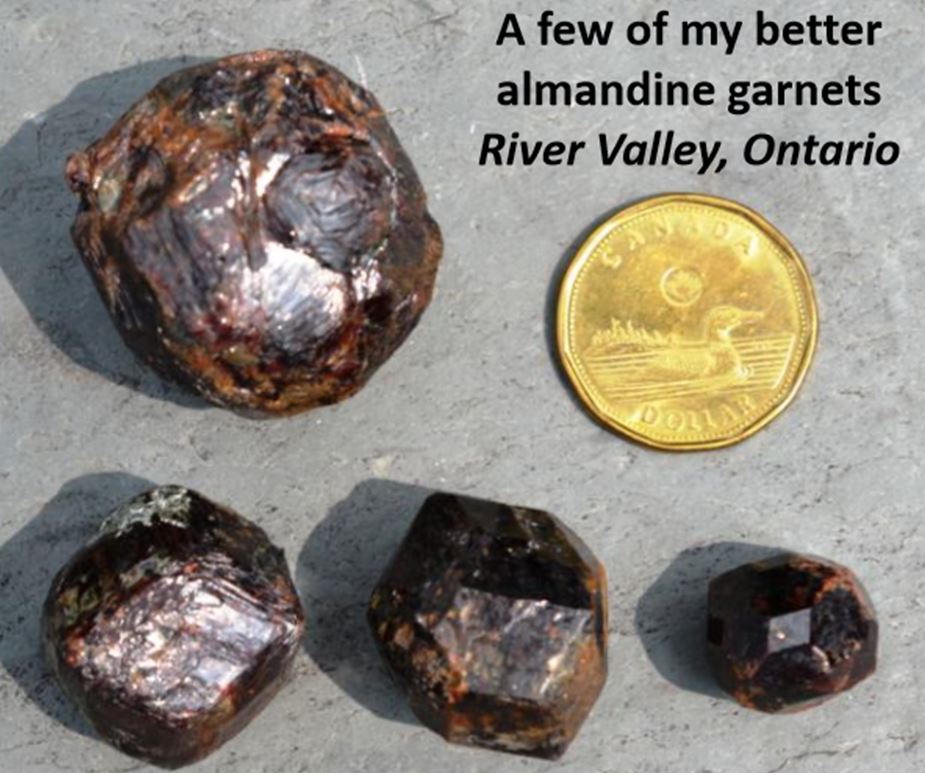
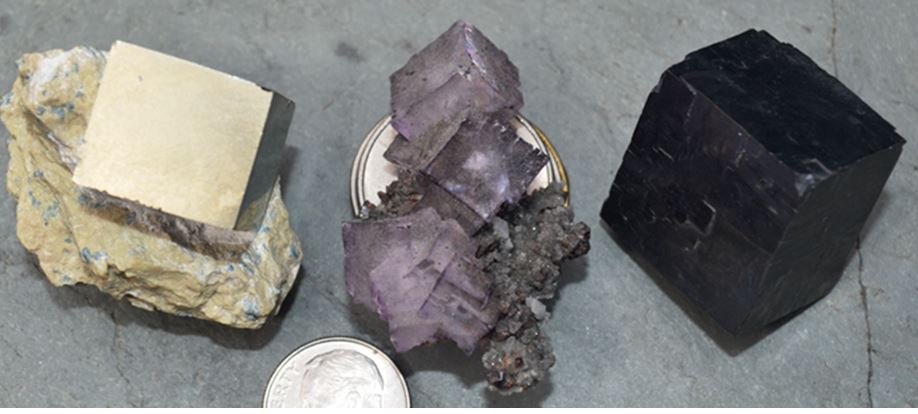
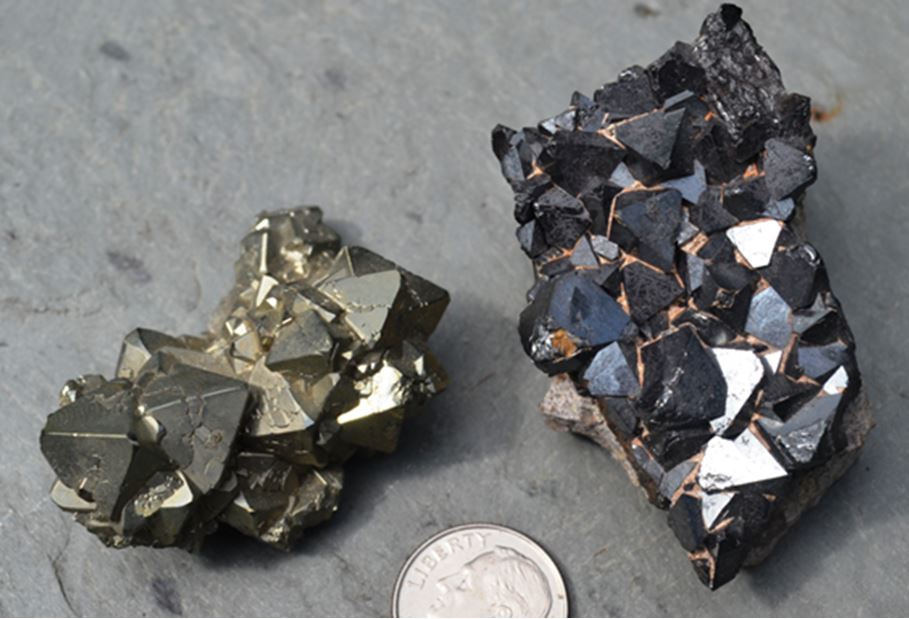
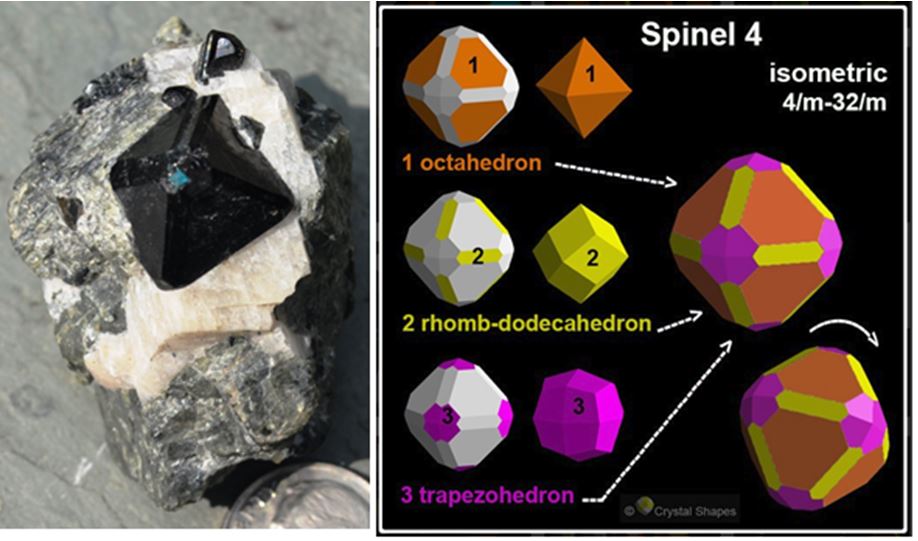
References:
Holtkamp, M., 2014, Smorf Crystal Models – webpage
Langerwall, D., 2011, Crystal Combinations in the Isometric System, mindat webpage
